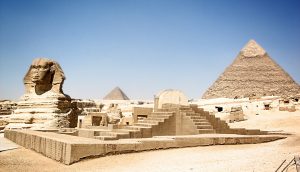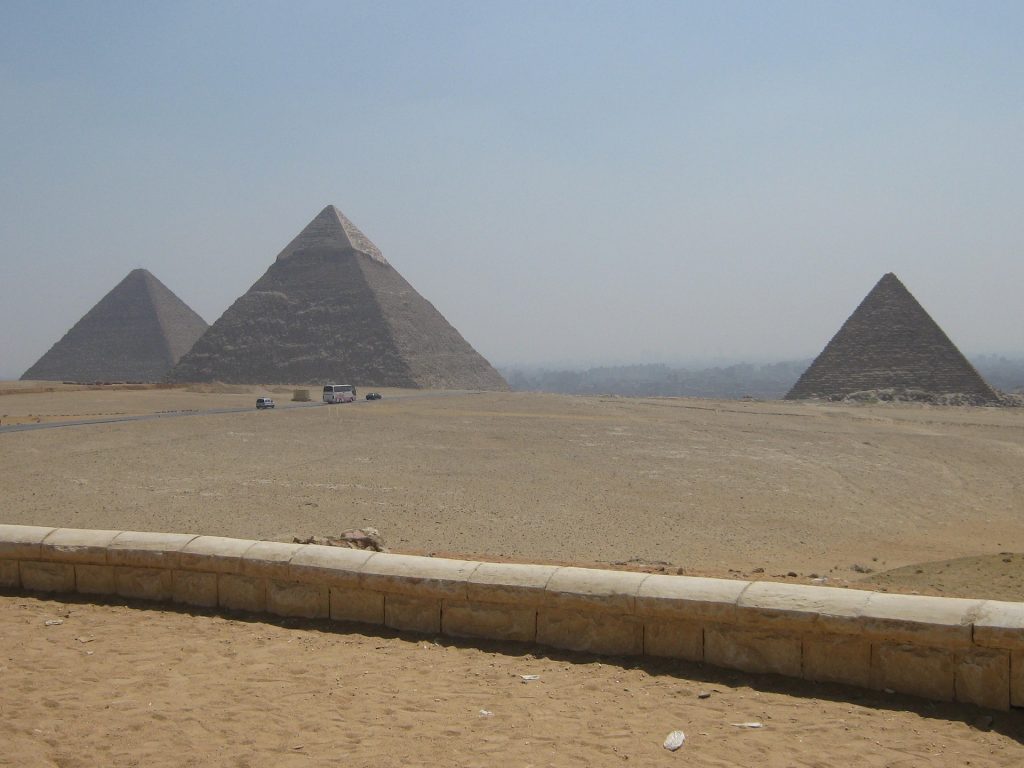When we thought we knew it all, a new discovery comes along and blows our minds. This is what archaeologists are finding now that they have uncovered a new space within the Great Pyramid of Giza in Egypt.
The royal tomb, which was built back around 2,500 B.C., is considered to be one of the Seven Wonders of the Ancient World. Now, it just got a bit more mysterious with the latest discovery, which was documented in Nature.
 “All we know is that we have a void, we have a cavity, and it’s huge, which means possibly intentional and certainly worthy of further exploration,” Peter Der Manuelian, an Egyptologist at Harvard University, told NPR. “In that sense it’s obviously frustrating. On the other hand, as an architectural discovery, something we didn’t know about the interior of the Great Pyramid, it’s absolutely big news.”
“All we know is that we have a void, we have a cavity, and it’s huge, which means possibly intentional and certainly worthy of further exploration,” Peter Der Manuelian, an Egyptologist at Harvard University, told NPR. “In that sense it’s obviously frustrating. On the other hand, as an architectural discovery, something we didn’t know about the interior of the Great Pyramid, it’s absolutely big news.”
But how was the new section of the pyramid initially discovered?
A Deep Dive into the Great Pyramid
Mehdi Tayoubi, a researcher with the HIP Institute in Paris, told NPR that the initiative began when he and his colleagues decided they wanted to further investigate the pyramid in a “non-destructive” way.
“To better understand its internal structure, we imaged the pyramid using muons, which are by-products of cosmic rays that are only partially absorbed by stone,” Tayoubi and his researchers wrote in their study. “The resulting cosmic-ray muon radiography allows us to visualize the known and potentially unknown voids in the pyramid in a non-invasive way.”
The results showed two of the pyramid’s most well-known chambers, the King’s Chamber and the Grand Gallery. But above, they found a strange, oblong cavity that had previously gone undiscovered.
“The good news is the void is there. Now we are sure that there is a void. We know that this void is big,” Tayoubi told NPR. “I don’t know what it could be. I think it’s now time for Egyptologists and specialists in ancient Egypt architecture to collaborate with us, to provide us with some hypotheses.”
So what’s next for the recent discovery?
Manuelian says he hopes Egyptian antiquities authorities will work in collaboration with researchers to look further into the findings.
“The study of the pyramids has been going on for an awful long time. So any new contribution is always a welcome addition to our knowledge,” he told NPR.
